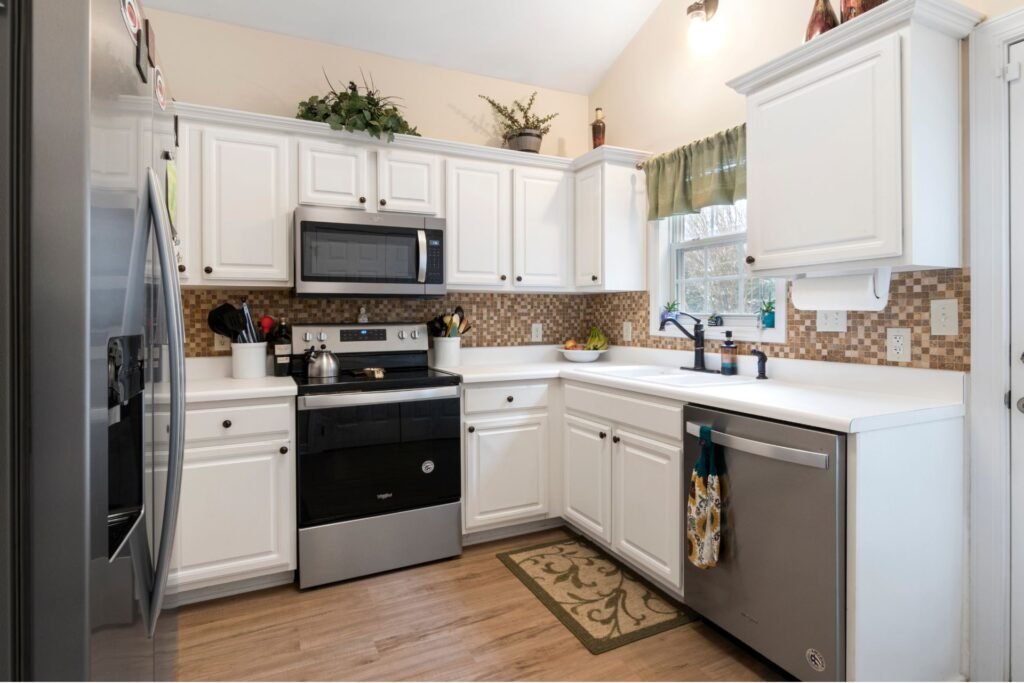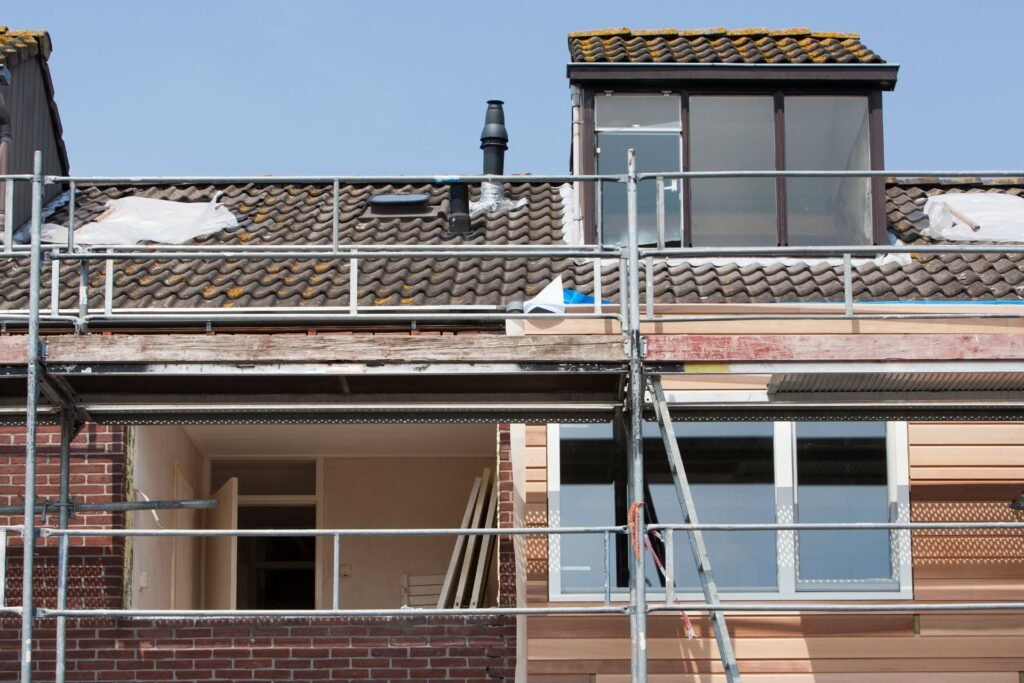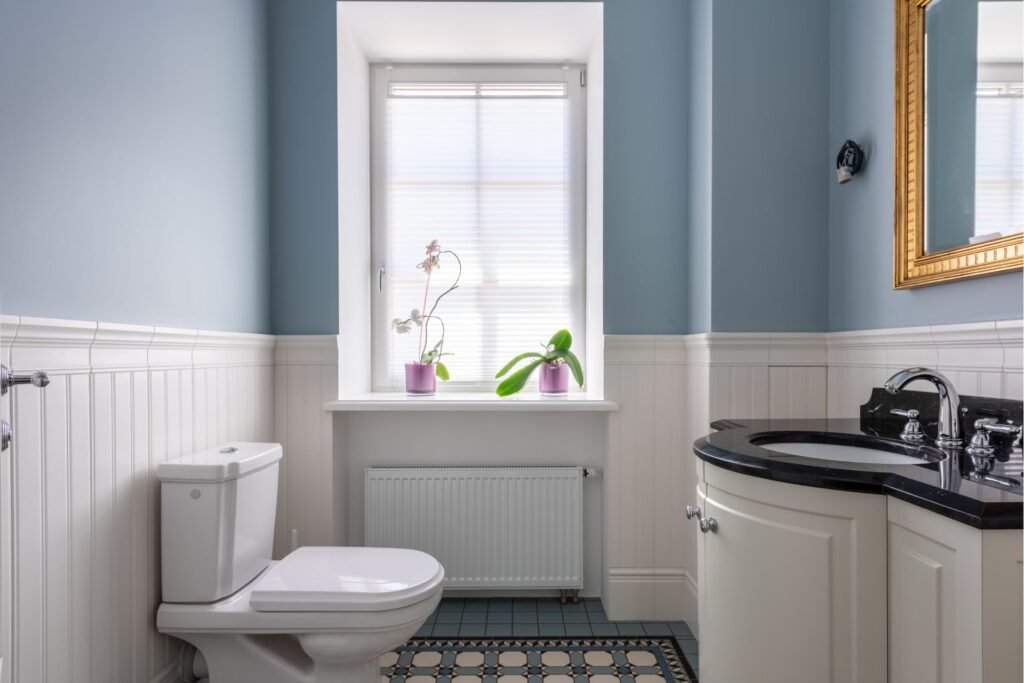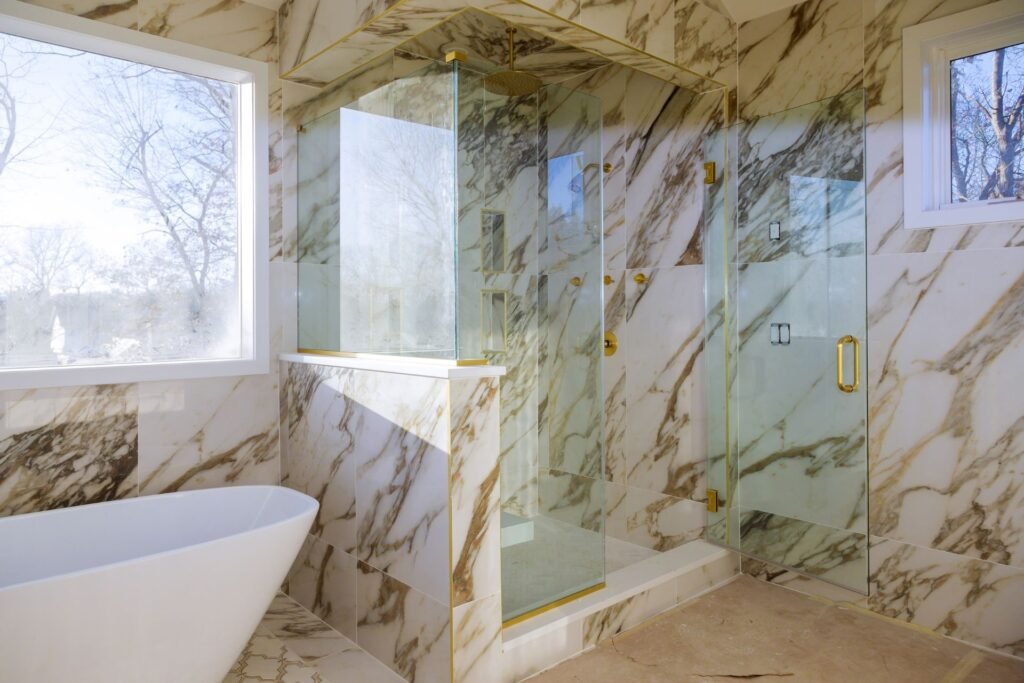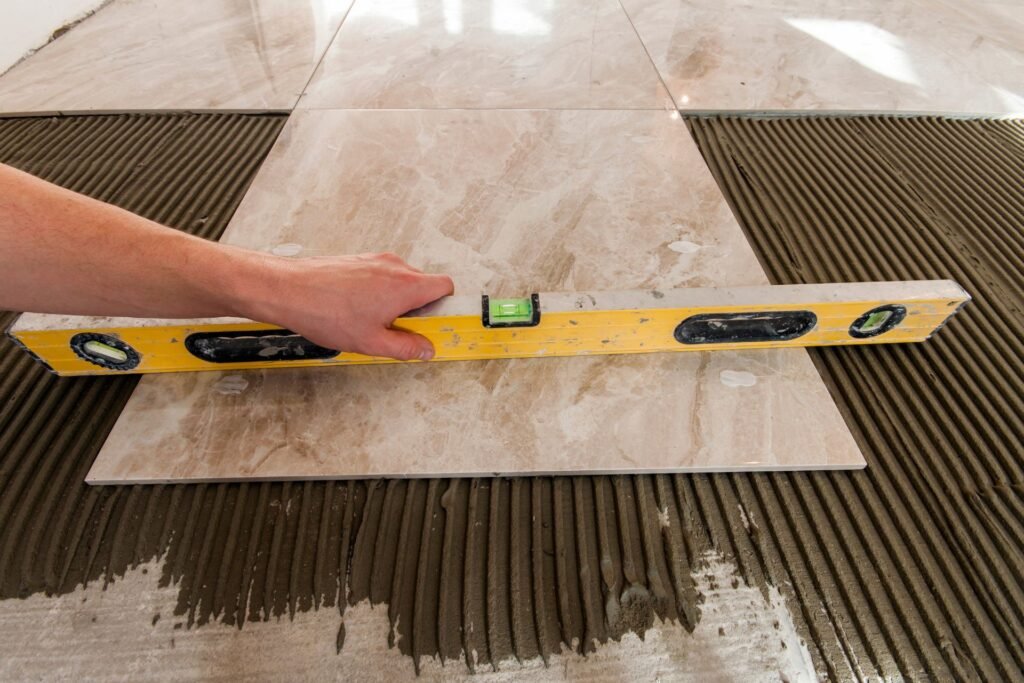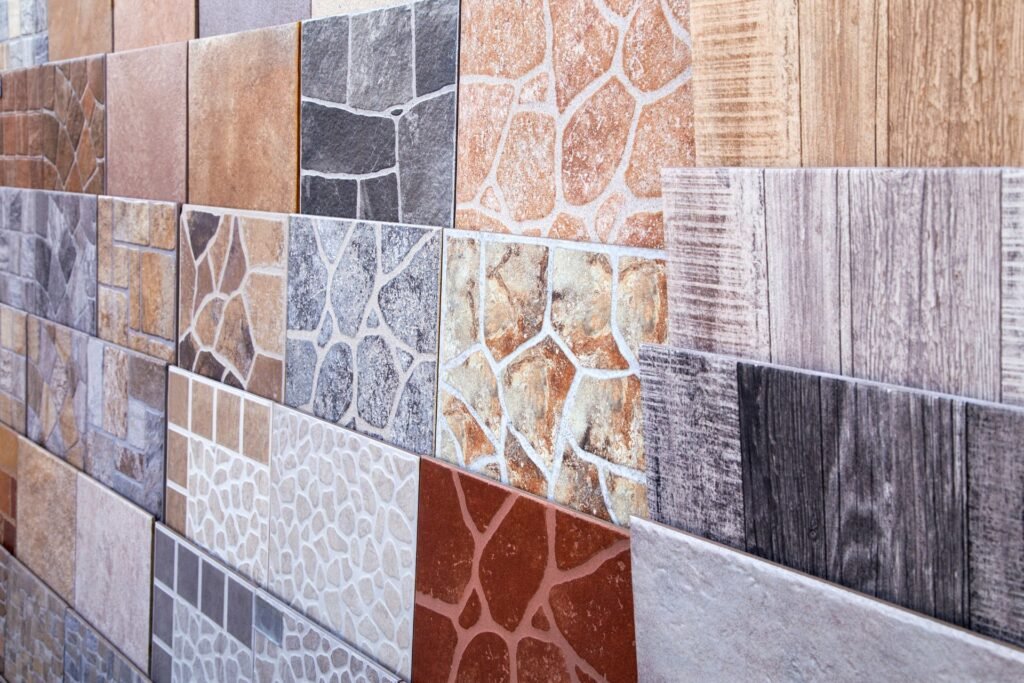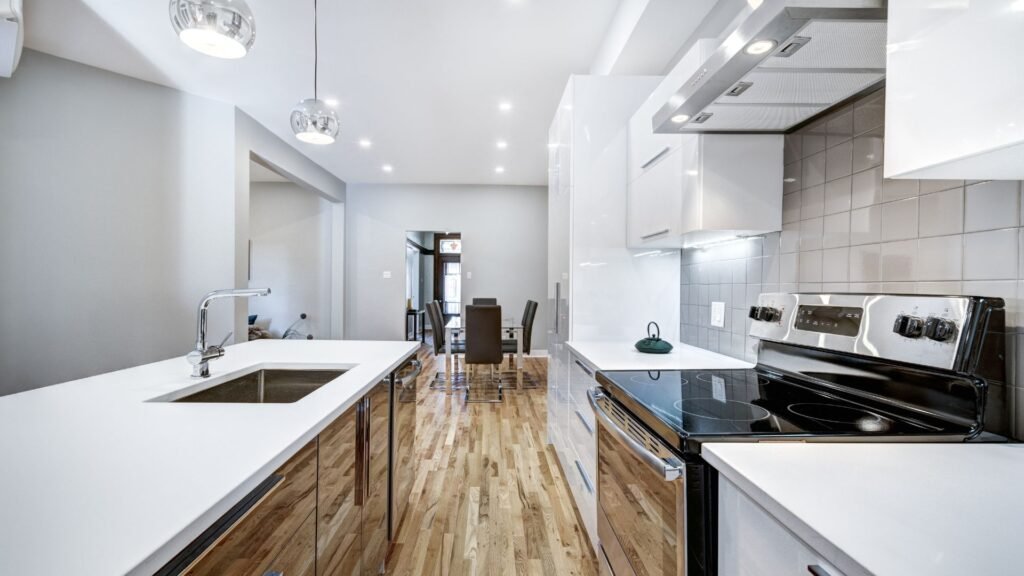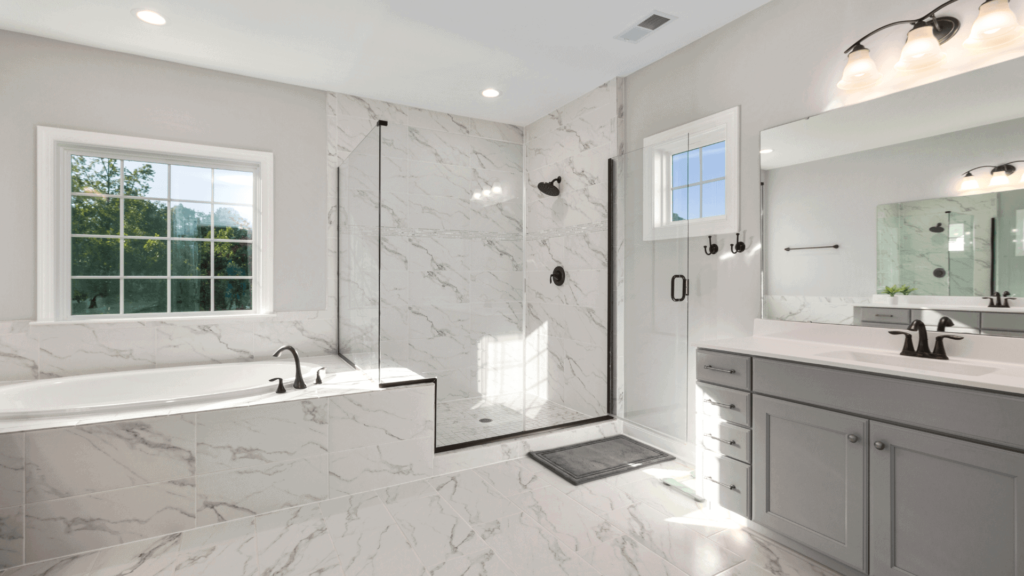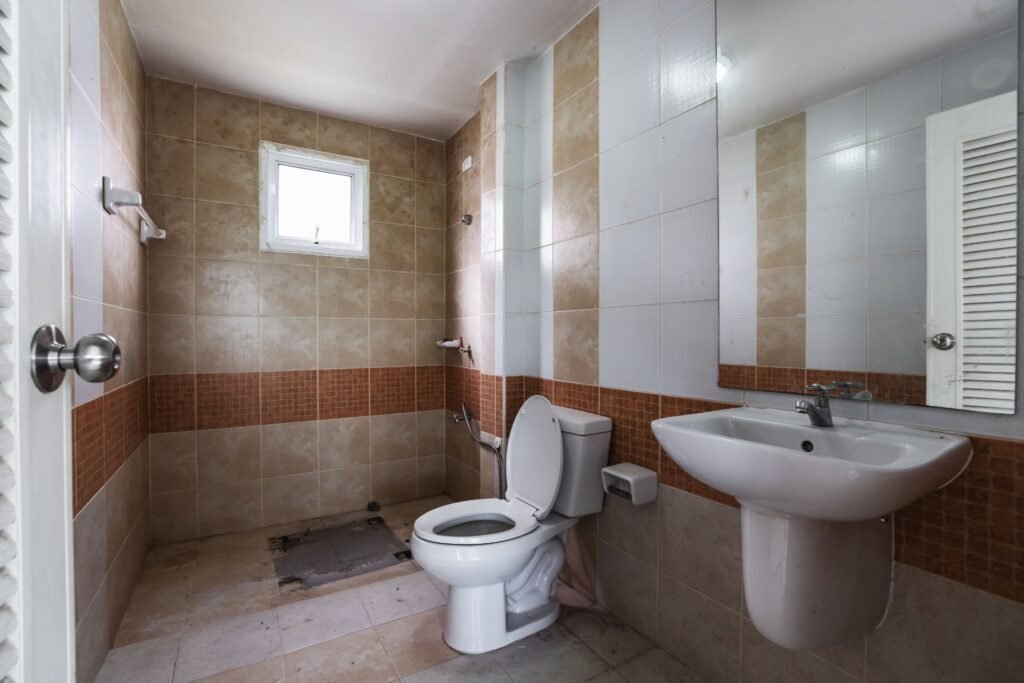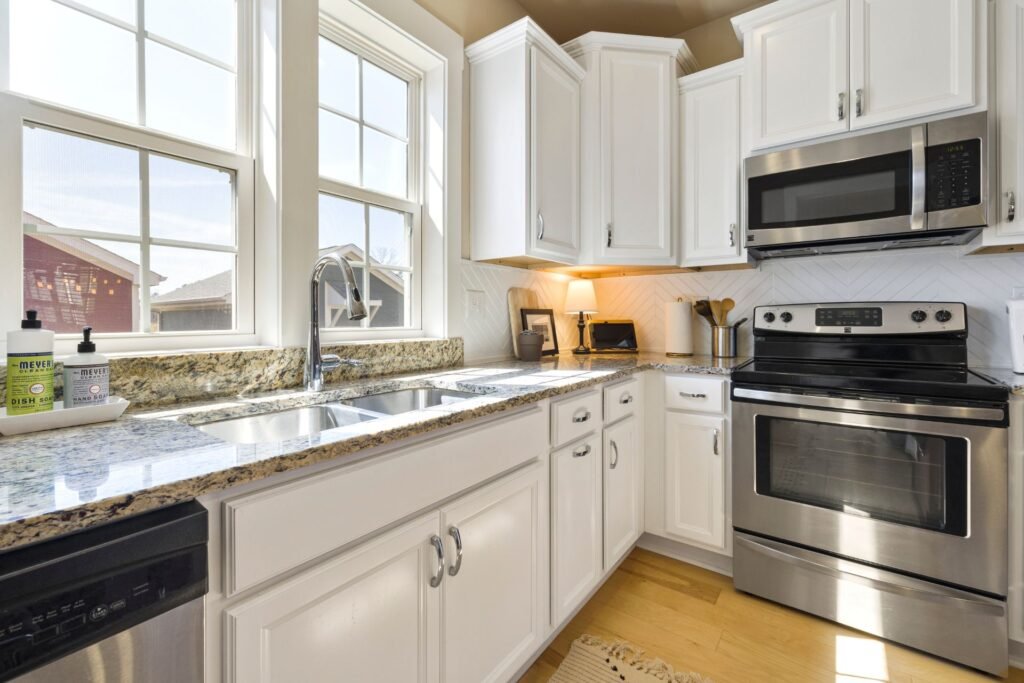Welcome to your ultimate guide on the cost of a new kitchen in New Zealand, where we break down everything you need to know before diving into your renovation project. Whether you’re dreaming of a sleek modern space or a cozy, functional layout, understanding the various factors that impact the cost is crucial to planning effectively. From the size of your kitchen and material choices to labor costs and potential hidden expenses, this guide will provide a comprehensive overview to help you budget wisely and avoid surprises along the way. Let’s explore what goes into creating your dream kitchen and how to make the most of your investment.
On average, the cost of a new kitchen in New Zealand ranges between $15,000 and $40,000, depending on the size, materials, and level of customization. Small kitchens typically start at around $15,000 for basic renovations, while high-end, luxury kitchens with premium finishes and appliances cost more than $40,000.
- Key Factors Influencing The Cost Of A New Kitchen In NZ
- Average Kitchen Renovation Costs In NZ
- Cost Breakdown: Materials, Labor, And Other Expenses
- Hidden Costs To Consider
- Cost-Saving Tips For A New Kitchen
- Financing Your New Kitchen
- Real-Life Examples Of New Kitchen Costs In NZ
- Common Mistakes To Avoid When Budgeting For A New Kitchen
- FAQs: About The New Kitchen Cost NZ
- Conclusion
Key Factors Influencing The Cost Of A New Kitchen In NZ
Several factors can significantly influence the overall cost when planning for a new kitchen in New Zealand. By understanding these key elements, homeowners can better estimate their budget and make informed decisions that align with their preferences and financial constraints.
Size of the Kitchen
The size of your kitchen is one of the most critical factors affecting the cost of a kitchen renovation. Whether you have a small, medium, or large kitchen, the dimensions directly impact the amount of materials needed, the labor involved, and the overall complexity of the project.
- Small Kitchens: For smaller kitchens, costs can be lower due to reduced material and labor needs. However, compact spaces may require more creative solutions, such as custom cabinetry, which can increase costs.
- Medium Kitchens: A medium-sized kitchen offers more flexibility in design and materials, with average costs typically falling in the mid-range. Homeowners in this category often opt for a balance of budget-friendly and premium options.
- Large Kitchens: Larger kitchens naturally incur higher costs due to the sheer volume of materials and labor required. More space also provides the opportunity for luxury upgrades, which can further drive up the price.
On average, kitchen renovation costs in New Zealand can vary from $15,000 for smaller, budget-conscious projects to upwards of $50,000 for large, high-end kitchens. Understanding the size of your kitchen and how it relates to the scope of your renovation will help you plan accordingly.
Materials and Finishes
The materials and finishes you select play a significant role in determining the cost of your new kitchen. From countertops to cabinetry, every material choice can either stretch or reduce your budget.
- Budget Materials: For those working with a limited budget, laminate countertops and melamine cabinetry are popular choices. These materials are affordable and durable, making them a common option for budget-friendly renovations.
- Mid-Range Materials: If you’re aiming for a balance between cost and quality, materials like engineered stone countertops and plywood cabinetry offer durability with a more polished appearance. These are commonly found in mid-range New Zealand kitchens.
- High-End Materials: For a luxury kitchen, high-end materials such as granite or marble countertops, solid wood cabinetry, and premium hardware provide a stunning finish but come with a much higher price tag.
For example, laminate countertops might cost between $200 to $500 per square meter, while stone or marble could range from $600 to $1,500 per square meter. Carefully considering your material choices can significantly impact the overall cost of your kitchen.
Appliances
Appliance costs are another important factor in your kitchen renovation budget. The choice between basic, functional appliances and high-end, luxury models will largely dictate your spending.
- Basic Appliances: For a budget-conscious kitchen, standard appliances like basic ovens, cooktops, and refrigerators are more affordable, with costs generally ranging from $2,000 to $5,000 for the entire set.
- Luxury Appliances: If you prefer top-of-the-line appliances, such as smart fridges, professional-grade ovens, and high-end dishwashers, expect to spend between $10,000 and $20,000 or more.
Energy-efficient appliances, while potentially more expensive upfront, can provide long-term savings on your energy bills. Brands like Fisher & Paykel, Bosch, and Smeg offer a range of energy-efficient options that are both environmentally friendly and cost-effective over time.
Labor Costs
Labor costs can vary significantly depending on the complexity of your kitchen renovation and the professionals involved in the project.
- Contractors and Builders: Hiring contractors, builders, and installers for tasks such as plumbing, electrical work, and cabinetry installation will account for a substantial portion of your budget. On average, labor costs in New Zealand range from $60 to $120 per hour, depending on the region and the specific trade.
- Designers: Engaging a kitchen designer to help plan and execute your vision can add to the overall cost. Designers typically charge either a flat fee or a percentage of the project cost, which could range from $1,500 to $10,000 or more depending on the scope of work.
- Regional Variances: Labor costs in New Zealand can vary based on location. For example, kitchen renovations in Auckland or Wellington tend to be more expensive due to higher demand and cost of living, while costs in smaller cities or rural areas may be more affordable.
In conclusion, the key factors influencing the cost of a new kitchen in NZ kitchen size, materials, appliances, and labor must be carefully considered to ensure the project aligns with your budget and expectations. By balancing these elements, you can create a kitchen that is both functional and beautiful, without overspending.

Average Kitchen Renovation Costs In NZ
Kitchen renovation costs in New Zealand can vary significantly based on the size of the kitchen, the type of materials used, and the complexity of the design. When considering a kitchen upgrade, it’s important to budget according to the space you have and the vision for your remodel. Below, we break down the average renovation costs by kitchen size to help you get a clearer idea of what to expect.
Small Kitchen Renovation Costs
For homeowners working with a smaller kitchen, the focus is typically on efficiency and minimalistic design. Small kitchens, typically ranging from 6-10 square meters, require careful planning to maximize functionality without overwhelming the space. Renovations for small kitchens usually involve updating cabinetry, countertops, and lighting, and sometimes adding new appliances. The cost for a small kitchen renovation in New Zealand can range between $10,000 and $25,000 depending on the materials chosen and the complexity of the remodel.
For example, in a small kitchen of 6-10 square meters, installing flat-pack cabinetry, a laminate benchtop, and basic appliances will cost significantly less than opting for custom cabinetry, stone benchtops, and high-end appliances. Minimalist designs tend to keep costs on the lower end, particularly when choosing streamlined layouts and less expensive materials.
Medium Kitchen Renovation Costs
A medium-sized kitchen, typically ranging between 10-20 square meters, is more common in many New Zealand homes. These kitchens offer more flexibility in layout and design, and the renovation costs tend to reflect that. A medium kitchen renovation often includes upgrading to more durable materials, modernizing appliances, and potentially even reconfiguring the space to improve the overall flow and functionality.
In New Zealand, renovating a medium-sized kitchen typically costs between $20,000 and $45,000. This price range can fluctuate depending on the quality of materials and the extent of the work. For instance, using engineered stone countertops, soft-close cabinetry, and mid-range appliances would keep the costs in the middle of the range, while opting for bespoke cabinetry, premium fittings, and feature lighting could push the budget higher.
An example renovation in a 10-20 square meter kitchen might include new engineered stone benchtops, tiled splashbacks, updated lighting fixtures, and modern stainless steel appliances. Such a remodel would enhance both the functionality and aesthetic appeal of the kitchen.
Large Kitchen Renovation Costs
Large kitchens, often found in more modern or upscale homes, range from 20-30 square meters or more. Renovating a large kitchen offers ample opportunity to incorporate luxurious materials, top-of-the-line appliances, and custom features like kitchen islands, high-end cabinetry, and specialized storage solutions. However, these enhancements come with a price.
The cost for a large kitchen renovation in New Zealand can start at around $45,000 and can easily exceed $80,000 depending on the scope of the project. High-end renovations might include custom cabinetry, marble or granite countertops, professional-grade appliances, integrated smart home features, and underfloor heating.
For example, a 20-30 square meter kitchen remodel might involve custom-built cabinetry, premium stone countertops, a large kitchen island with a sink, designer lighting, and a suite of high-end appliances. A project of this caliber not only elevates the home’s overall value but also provides a luxurious space tailored to the homeowner’s lifestyle.
Whether you’re working with a small, medium, or large kitchen, understanding the average costs for renovations in New Zealand is crucial for budgeting your project. Costs will vary depending on the size of the kitchen, the materials chosen, and the complexity of the design. However, no matter the scale, a well-planned kitchen renovation can transform your space into a more functional and aesthetically pleasing heart of the home.

Cost Breakdown: Materials, Labor, And Other Expenses
When planning a kitchen renovation, it’s essential to break down costs into distinct categories, including materials, labor, and other potential expenses. By understanding the individual components and their price variations, you can better plan your budget and avoid unexpected costs. Let’s take a closer look at some of the critical areas in a typical kitchen renovation.
Cabinetry
Cabinetry is often one of the most significant expenses in a kitchen renovation, and its cost can vary greatly depending on the type of cabinets you choose. Flat-pack cabinetry is a popular, budget-friendly option that comes pre-cut and requires assembly. These cabinets are usually mass-produced and can be installed relatively quickly, making them ideal for those looking to save on both materials and labor.
On the other hand, custom-built cabinetry offers the highest level of personalization. You can choose specific materials, finishes, and unique designs tailored to your space. Naturally, the costs for custom-built cabinets are higher due to the bespoke nature of the design, the quality of materials used, and the time required for skilled craftsmanship.
Flat-pack cabinets may range from $2,000 to $6,000, depending on the size of your kitchen and the type of materials. Custom cabinetry, however, can easily exceed $15,000, with prices influenced by wood choices, hardware, and intricate details. Consider your needs and budget carefully when making this decision.
Benchtops
Your choice of benchtop material significantly influences both the aesthetics and the cost of your kitchen renovation. Laminate benchtops are the most affordable option, often ranging between $600 and $2,000, depending on the size and finish. Laminate is durable and low maintenance, but it may not have the same luxurious appeal as more expensive materials.
For those seeking a higher-end finish, granite, and engineered stone benchtops are popular choices. Granite is a natural stone that brings a timeless, high-end look to the kitchen, with prices typically ranging from $3,000 to $7,000, depending on the slab and installation. Engineered stone, such as quartz, offers similar aesthetics but often at a lower cost, with prices between $2,000 and $5,000. These options are durable, heat-resistant, and add significant value to your home.
Flooring
Kitchen flooring plays a vital role in both function and design, and there are several popular options to choose from, each with its cost implications. Tile flooring is a classic choice that offers durability and easy maintenance, with costs ranging from $50 to $150 per square meter, including installation. The wide variety of tile designs and materials available allows for flexibility in matching your style preferences.
Hardwood flooring, while offering warmth and natural beauty, comes at a higher price point, typically between $100 and $250 per square meter, depending on the type of wood and finish. Hardwood requires more maintenance but can significantly boost the overall value of your home.
Vinyl is a more budget-conscious option that has seen a resurgence in popularity due to advances in design and durability. Vinyl flooring can mimic the look of wood or stone and costs between $30 and $100 per square meter, making it an affordable yet stylish choice for many homeowners.
Plumbing and Electrical Work
Changes in the layout of your kitchen can have a substantial impact on the plumbing and electrical work required, which, in turn, affects your overall renovation costs. For instance, relocating a sink or adding a dishwasher can increase plumbing expenses, as it involves rerouting pipes and potentially upgrading systems to handle the extra workload. Costs for plumbing alterations can range from $500 to $3,000, depending on the complexity of the job.
Similarly, electrical work such as installing new outlets, upgrading lighting, or moving appliances like ovens and cooktops will require a licensed electrician. Electrical modifications can cost anywhere from $800 to $4,000, depending on the scope of work and the need for upgraded circuits or wiring.
Painting and Finishing
Once the major components of your kitchen are in place, attention turns to painting and finishing, which gives the space its final polished look. The cost of painting walls, ceilings, and cabinets varies based on the size of your kitchen and the type of paint you choose. For a standard kitchen, expect to spend between $1,000 and $3,000 on painting, which includes labor and materials.
Finishing touches like wall tiles, backsplashes, and decorative elements such as crown molding or trim can further enhance the kitchen’s appearance. These small details often cost between $500 and $2,000, depending on the materials used and the amount of labor required for installation.
Understanding the breakdown of materials, labor, and additional expenses is crucial to managing the cost of your kitchen renovation. By assessing options like cabinetry, benchtops, flooring, plumbing, electrical work, and finishing touches, you can tailor your project to your budget while achieving the style and functionality you desire.

Hidden Costs To Consider
When planning a renovation, it’s essential to think beyond the visible costs of materials and labor. Hidden costs often catch homeowners by surprise, and failing to account for them can throw a project off budget. Here’s a closer look at some of the common hidden expenses to be mindful of:
Unexpected Repairs
One of the biggest uncertainties in a renovation project is the potential for unexpected repairs. As you begin tearing down walls or pulling up flooring, underlying issues can reveal themselves. For example, water damage behind cabinets or outdated wiring systems can add unforeseen expenses. It’s essential to conduct a thorough inspection before starting any renovation to identify these potential problems early. However, even with a pre-renovation inspection, not all issues may be visible, so it’s wise to set aside a contingency budget typically 10-20% of your total renovation cost to handle any surprises that may come up.
Building Consent and Compliance
In New Zealand, certain types of renovations require building consent, particularly if you’re making structural changes or altering plumbing and electrical systems. Navigating the consent process can be time-consuming and costly. Depending on the scope of the renovation, you may need to hire an architect or building professional to submit detailed plans for approval. The cost of consent can vary depending on your local council’s requirements, and failing to obtain the necessary consent can result in penalties or complications when it comes time to sell your home. Always check with your local council to understand what approvals are needed for your project and factor these costs into your overall budget.
Waste Disposal
Another frequently overlooked expense is the cost of waste disposal. Renovation projects generate a significant amount of debris, including old countertops, cabinetry, and flooring. Proper disposal of these materials is not just about carting them to the dump it’s also about ensuring they’re disposed of responsibly. Many homeowners opt for hiring a skip bin service, but prices can add up, especially if your renovation produces a large volume of waste. Some materials may need special handling, such as hazardous waste, which can incur additional fees. It’s crucial to research waste disposal options in your area and choose a service that aligns with your environmental values while staying within budget.
Time Costs
Finally, time is money, and delays in your renovation can lead to increased costs. If your project takes longer than expected, you may incur additional expenses for labor, temporary accommodations (if you’re staying elsewhere during the renovation), or even the cost of living without a functional kitchen for an extended period. To mitigate time costs, set realistic expectations for the timeline of your project, and plan for potential delays, such as waiting for materials or unforeseen construction issues. Regular communication with your contractor can help keep the project on track and prevent costs from spiraling due to prolonged timelines.
These hidden costs are an inevitable part of the renovation process, but with careful planning and budgeting, you can mitigate their impact. By being aware of potential surprises like unexpected repairs, building consents, waste disposal, and time costs, you’ll be better prepared for the true cost of your renovation project. Remember to allow for some flexibility in your budget to cover these hidden expenses, and your renovation experience will be far less stressful.

Cost-Saving Tips For A New Kitchen
Renovating a kitchen can be a significant financial commitment, but there are smart strategies to help you reduce costs without sacrificing the functionality or style you desire. Below are some practical tips to guide you in keeping your expenses in check while still achieving a quality outcome.
DIY vs. Hiring Professionals
One of the key decisions you’ll face during your kitchen renovation is whether to tackle certain tasks yourself or hire professionals. There are some areas where taking the DIY route can save you a significant amount of money. For instance, simple tasks like painting, installing shelves, or assembling flat-pack cabinets can be safe and achievable for many homeowners, especially those who are handy with tools.
However, it’s essential to recognize where professional help is non-negotiable. Electrical work, plumbing, and structural changes should always be handled by licensed professionals to ensure the work complies with local building codes and to avoid costly mistakes. The risk of something going wrong is much higher when you venture into tasks outside of your expertise, so balance your DIY enthusiasm with an honest assessment of your abilities.
Reusing Existing Fixtures
Another effective way to reduce the overall cost of your kitchen renovation is to reuse existing fixtures and appliances. If your cabinetry is in good condition, consider giving it a facelift with new doors, handles, or a fresh coat of paint rather than replacing the entire unit. Similarly, if your appliances are still in good working order, there’s no need to swap them out just for the sake of having something new.
Reusing fixtures like faucets, sinks, or lighting can also help trim costs. If these elements are still stylish and functional, they can be incorporated into your new design seamlessly. Not only will this approach save you money, but it’s also a more sustainable option, reducing waste and the need for new materials.
Shopping Around for Quotes
One of the simplest yet most effective ways to save money on your kitchen renovation is to shop around for quotes. Don’t settle for the first contractor or supplier you find. Instead, obtain multiple quotes from various professionals and compare them carefully. Look beyond the bottom-line cost and consider what each quote includes. For example, one contractor might offer a lower price, but another might include a longer warranty or higher-quality materials.
Make sure you’re comparing apples to apples by asking for detailed breakdowns of each quote. This will help you see where you might be able to negotiate or where certain contractors are adding value. Don’t be afraid to ask questions and get clarification on any vague terms or fees.
Choosing Affordable Yet Durable Materials
Selecting the right materials for your kitchen is another area where you can make significant savings. The goal is to find materials that are both affordable and durable so that you don’t end up with expensive repairs or replacements down the road. For instance, laminate countertops can mimic the look of high-end materials like granite or marble at a fraction of the price, and they are often just as durable.
When it comes to flooring, vinyl or linoleum are budget-friendly options that can withstand heavy traffic and spills. Cabinets made from MDF or particleboard with a high-quality veneer can also look luxurious while keeping costs down. The key is to prioritize areas where durability is essential, such as countertops and flooring, while opting for less expensive materials in less critical areas.
Phased Renovations
If the total cost of your kitchen renovation feels overwhelming, consider breaking the project down into phases. Phased renovations allow you to spread out the expenses over time, which can be easier on your budget. Start with the essential updates, such as new appliances or cabinetry, and tackle other improvements, like lighting or countertops, later on when your budget allows.
This approach can be particularly useful if you have a tight budget but still want to make progress on your renovation. By prioritizing the most important changes first, you can ensure that your kitchen remains functional during the process while giving yourself the flexibility to upgrade other elements down the road.
With careful planning and smart decisions, it’s possible to create the kitchen of your dreams without blowing your budget. Whether it’s taking on some tasks yourself, reusing existing fixtures, shopping around for quotes, choosing cost-effective materials, or phasing out your renovation, each of these tips can help you achieve significant savings. A well-executed renovation doesn’t have to be the most expensive it just needs to be the most thoughtful.

Financing Your New Kitchen
Renovating your kitchen is a significant investment, and how you choose to finance the project can have a lasting impact on your finances. From saving up ahead of time to taking out a loan or exploring available grants and subsidies, understanding your options will help you make a well-informed decision that best suits your situation.
Saving Up vs. Borrowing
When it comes to financing your kitchen renovation, one of the first decisions you’ll need to make is whether to save up for the project or borrow the money. Both approaches have distinct advantages, and the best choice depends on your financial situation and goals.
Saving up for your kitchen renovation means that you’ll pay for the project with your funds, avoiding debt altogether. This method can provide peace of mind because there are no monthly payments to worry about, no interest accruing, and no risk of falling into debt. It may take longer to gather the necessary funds, but the financial freedom that comes with being debt-free can be incredibly rewarding. Additionally, by saving up, you give yourself time to plan the project carefully, research materials, compare contractors, and refine your design vision.
On the other hand, borrowing allows you to complete your kitchen renovation much sooner, without having to wait years to accumulate savings. There are a variety of loan options available, some with favorable interest rates and flexible repayment terms. Taking out a loan can be particularly beneficial if you need to upgrade your kitchen urgently for example, if appliances are failing, or the layout is no longer functional for your family’s needs. However, it’s important to consider the long-term cost of borrowing. Interest payments can add up over time, potentially making your renovation more expensive than if you had saved up and paid upfront. Weighing the costs of financing through savings versus borrowing is essential before committing to a plan.
Home Renovation Loans
If borrowing is the route you choose, understanding the types of loans available for home renovations in New Zealand will help you secure the best deal.
Home renovation loans come in different forms, each suited to different circumstances. A common option is a personal loan, which is unsecured and typically quick to arrange. Personal loans usually come with higher interest rates than secured loans, but they offer the advantage of not requiring collateral meaning your home isn’t at risk if you’re unable to keep up with repayments.
For those looking for lower interest rates, a home equity loan or line of credit may be a better option. These loans are secured against the equity in your property, making them a popular choice for larger renovation projects like kitchen upgrades. The amount you can borrow depends on the current value of your home and the equity you have built up. While the interest rates for home equity loans are generally lower than personal loans, the risk is higher because your home serves as collateral.
Another option is to refinance your mortgage to include the cost of your renovation. Refinancing can sometimes offer the lowest interest rates and the longest repayment terms, which can reduce your monthly payment burden. However, this approach also extends the overall length of your mortgage and may cost more in interest over the long run. It’s important to weigh these pros and cons carefully and seek professional advice if needed.
Government Grants and Subsidies
In New Zealand, there are also government grants and subsidies that can help offset some of the costs associated with kitchen renovations, particularly if your project includes energy-efficient upgrades or essential repairs.
For example, if your kitchen renovation includes installing insulation, replacing old appliances with energy-efficient models, or improving ventilation, you may be eligible for financial assistance through the Warmer Kiwi Homes Programme. This initiative provides grants to low-income homeowners to help cover the cost of energy-efficient improvements, including heating, insulation, and more. While this program doesn’t cover kitchen renovations specifically, it can still reduce the overall cost if your kitchen upgrade aligns with the energy-efficiency criteria.
Additionally, some local councils offer renovation grants for essential repairs in older homes or heritage properties. These grants are typically intended to help homeowners preserve the structural integrity of their property, but in certain cases, kitchen renovations may be covered if they involve restoring or upgrading original features.
It’s worth exploring any available government incentives or subsidies that could apply to your renovation. While grants might not cover the entire cost of your project, they can ease the financial burden, especially if you’re incorporating sustainable practices or upgrading for energy efficiency.
In conclusion, financing your new kitchen requires careful consideration of all your options. Whether you save up, take out a loan, or explore grants and subsidies, the key is to choose the strategy that fits your financial goals and renovation timeline.

Real-Life Examples Of New Kitchen Costs In NZ
Understanding the potential costs of a kitchen renovation in New Zealand is key to making informed decisions. Here are three real-life examples that represent different budget ranges: budget, mid-range, and high-end. These scenarios illustrate the costs and materials involved at each level, helping you align your expectations with your budget.
Budget Kitchen Renovation Example
In this example, a homeowner in Hamilton, NZ, decided to refresh their outdated kitchen on a tight budget of around $15,000. The renovation focused on cosmetic changes rather than structural work, keeping costs down while giving the kitchen a fresh new look.
Key Expenses
- Cabinet Refacing: Instead of replacing the cabinets, the homeowner opted to reface them, costing about $4,000. This involved applying new veneers to the existing cabinet surfaces and replacing old hardware with modern handles and hinges.
- Laminate Benchtops: The old benchtop was replaced with a budget-friendly laminate option, priced at around $1,500. This material mimicked the look of stone but at a fraction of the cost.
- Vinyl Flooring: The flooring was updated with durable and easy-to-clean vinyl, costing around $1,200. Vinyl is a popular choice for budget renovations due to its affordability and variety of styles.
- Basic Appliances: They invested in new, energy-efficient appliances, including a refrigerator and stove, which cost around $4,000 in total.
- Labor Costs: The homeowner hired a general contractor to handle the installation and minor plumbing updates, which amounted to $4,300.
In this budget renovation, the focus was on updating the appearance without breaking the bank. By choosing cost-effective materials and keeping the original kitchen layout, the project stayed within budget while dramatically improving the kitchen’s overall look and functionality.
Mid-Range Kitchen Renovation Example
A homeowner in Wellington aimed for a mid-range kitchen renovation with a budget of $40,000. The goal was to modernize the kitchen with better functionality and higher-quality materials while keeping costs reasonable.
Key Expenses
- Custom Cabinets: Unlike the budget renovation, this homeowner opted for custom cabinets, which allowed for better storage solutions and a more personalized design. The cabinets, made from medium-density fibreboard (MDF) with a satin finish, cost around $10,000.
- Quartz Benchtops: A quartz benchtop was chosen for its durability and aesthetic appeal, costing $7,000. Quartz is a popular choice in mid-range renovations because of its resistance to stains and scratches.
- Tile Backsplash: A subway tile backsplash was installed behind the stove and sink, adding both functionality and style at $2,000.
- Upgraded Appliances: The homeowner splurged on stainless steel appliances, including a high-end oven and dishwasher, totaling around $8,000.
- Lighting: LED downlights were installed to improve lighting efficiency and aesthetics, adding $3,500 to the budget.
- Labor Costs: The renovation required more involved plumbing and electrical work, bringing the total labor cost to $9,500.
This mid-range renovation balanced aesthetics, functionality, and durability. By investing in custom cabinetry, durable benchtops, and upgraded appliances, the homeowner achieved a stylish and modern kitchen without going overboard on luxury features.
High-End Kitchen Renovation Example
For a high-end kitchen renovation, a homeowner in Auckland set aside a budget of $100,000 to completely transform their kitchen into a luxurious space with top-of-the-line materials and the latest appliances.
Key Expenses
- Premium Custom Cabinets: Handcrafted solid wood cabinets with a custom paint finish were installed, costing $25,000. These cabinets featured soft-close hinges and pull-out storage systems, ensuring both elegance and functionality.
- Marble Benchtops: A luxurious marble benchtop was chosen for its unmatched beauty, costing $20,000. While marble requires more maintenance, its classic look and unique veining make it a standout feature in high-end kitchens.
- High-End Appliances: The homeowner invested in professional-grade appliances, including a built-in refrigerator, a smart oven, and a powerful range hood, totaling $30,000. These appliances not only enhanced the kitchen’s functionality but also added a touch of luxury.
- Custom Lighting and Fixtures: Bespoke pendant lights, task lighting, and under-cabinet lighting were installed to highlight different areas of the kitchen. These lighting features added $7,500 to the budget.
- Hardwood Flooring: The flooring was upgraded to solid oak hardwood, costing $10,000. The warm, natural tones of the wood created a sophisticated ambiance.
- Labor Costs: Due to the complexity of the renovation, including structural changes, plumbing updates, and electrical work, labor costs amounted to $17,500.
This high-end renovation transformed the kitchen into a luxurious and highly functional space. The investment in premium materials, custom cabinetry, and cutting-edge appliances resulted in a kitchen that not only looked stunning but also offered superior performance and long-term durability.
In each of these examples, the costs vary greatly depending on the materials used, the scope of the project, and the level of customization. Whether you’re looking to update your kitchen on a budget or go all out on a high-end renovation, understanding these real-life examples can help you plan accordingly for your project in New Zealand.

Common Mistakes To Avoid When Budgeting For A New Kitchen
Budgeting for a new kitchen is a significant task that requires thoughtful planning and consideration. Many homeowners fall into the trap of making certain mistakes that can lead to unexpected costs or regrettable decisions down the road. Here, we’ll explore some of the most common budgeting pitfalls and provide practical tips on how to avoid them.
Underestimating Costs
When budgeting for a kitchen renovation, one of the most common mistakes is underestimating the total costs involved. It’s easy to focus on the big-ticket items such as cabinetry, countertops, and appliances while overlooking smaller, but equally important, details like plumbing, electrical work, and permits. Furthermore, labor costs can vary widely depending on your location and the complexity of the work.
To avoid being caught off guard, it’s essential to include a contingency budget of at least 10-20% of your total estimate. This buffer will help cover any unexpected expenses that may arise during the renovation process, such as discovering outdated wiring or hidden water damage behind walls. Remember, renovation projects rarely go exactly as planned and having a contingency fund in place can keep your project on track without derailing your finances.
Choosing Style Over Function
While it’s tempting to prioritize aesthetics when designing your new kitchen, focusing too heavily on style over function can lead to increased costs in the long term. Choosing trendy finishes or high-end materials that look stunning but don’t serve your day-to-day needs may lead to regret later on. For instance, opting for a beautiful but fragile countertop material may require frequent maintenance or even replacement if it doesn’t hold up to regular use.
When planning your kitchen renovation, it’s important to strike a balance between style and practicality. Consider how your kitchen will be used daily and prioritize features that enhance functionality. For example, ample storage, durable materials, and energy-efficient appliances can provide long-term value. Not only will this approach save you money down the line, but it will also ensure that your kitchen remains a functional and enjoyable space for years to come.
Ignoring Long-Term Value
Another common mistake homeowners make when budgeting for a new kitchen is ignoring the long-term value of investing in quality materials and workmanship. While it may be tempting to cut costs by choosing cheaper materials or opting for DIY solutions, this can often lead to additional expenses in the future. Low-quality cabinets, flooring, or fixtures may need to be replaced sooner than expected, costing you more in the long run.
Investing in durable, high-quality materials may come with a higher upfront cost, but it often pays off over time. For example, solid wood cabinetry, stone countertops, and energy-efficient appliances not only look better and last longer but can also increase your home’s resale value. By thinking of your kitchen renovation as a long-term investment, you can make decisions that benefit your wallet in the years to come, rather than just focusing on the immediate price tag.
In summary, budgeting for a kitchen renovation is about more than just crunching numbers. By avoiding common mistakes like underestimating costs, prioritizing style over function, and neglecting long-term value, you can create a kitchen that meets your needs today and holds up well into the future. Careful planning and smart decision-making are key to ensuring that your new kitchen delivers the best return on your investment.

FAQs: About The New Kitchen Cost NZ
Conclusion
The cost of a new kitchen in NZ is influenced by several key factors, including the size of the kitchen, the materials used, the complexity of the design, and labor expenses. Planning and setting a realistic budget are essential steps to ensure a smooth renovation process. By considering these factors early on, you can avoid unexpected costs and delays. We encourage you to take the next step in your kitchen renovation journey by reaching out to local experts for quotes and consultations tailored to your specific needs and preferences.
About the Author:
Mike Veail is a recognized digital marketing expert with over 6 years of experience in helping tradespeople and small businesses thrive online. A former quantity surveyor, Mike combines deep industry knowledge with hands-on expertise in SEO and Google Ads. His marketing strategies are tailored to the specific needs of the trades sector, helping businesses increase visibility and generate more leads through proven, ethical methods.
Mike has successfully partnered with numerous companies, establishing a track record of delivering measurable results. His work has been featured across various platforms that showcase his expertise in lead generation and online marketing for the trades sector.
Learn more about Mike's experience and services at https://theleadguy.online or follow him on social media:

